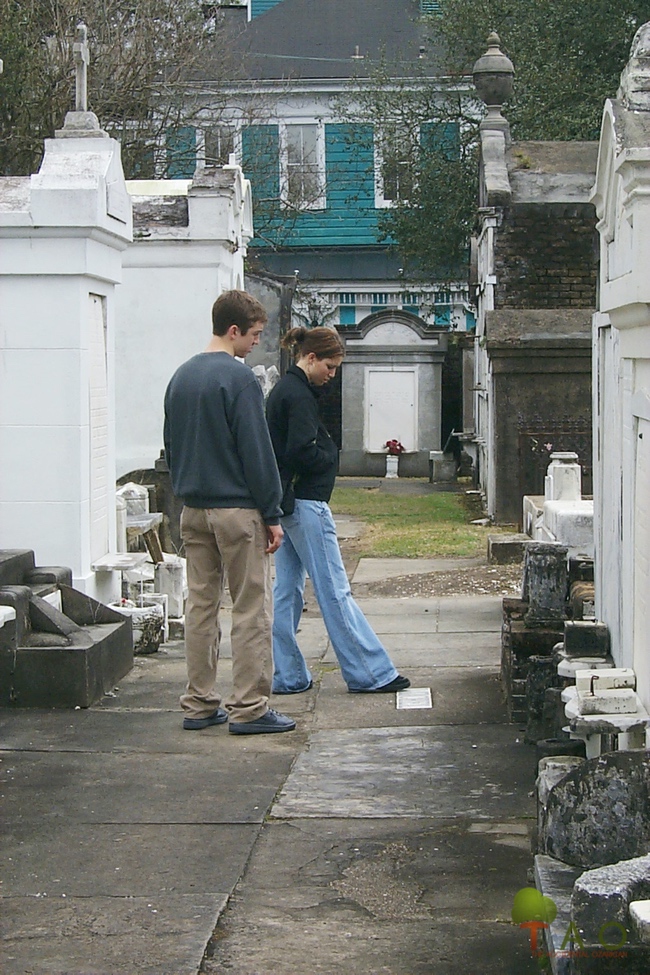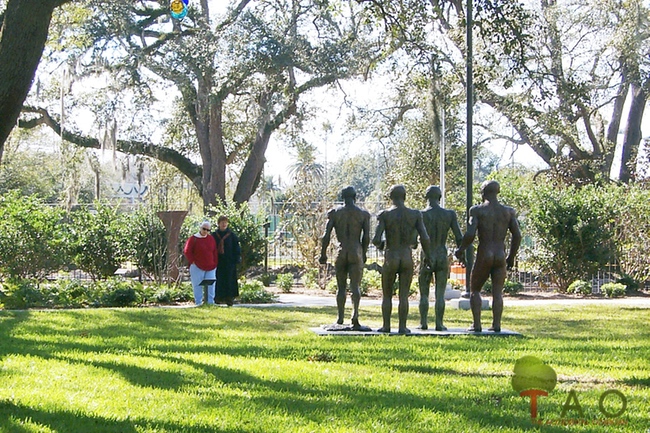Park the car, board a streetcar and enjoy the ride – while craning your neck to see the glorious architecture that the city offers to those who look up. Learn a little streetcar savvy and enjoy a day on the lines of the streetcars of New Orleans.
Oh, and don’t call them “trolleys.” That would be a dead give-a-way that you’re a tourist (besides the goofy beads around your neck and the “University of Bourbon Street” tee shirt). Take exact change, too.
Unlike San Francisco, where the trolleys come numbered, the streetcars in New Orleans have names. They do not have the same name all the time, though, since they are dubbed after the key streets on their routes and a particular car does not always travel the same route.
It is easy to spend a day riding the rails, and you can ride all three lines and soak in the ambience of New Orleans’ bustle and everyday life. This experience is one you won’t soon forget, for it offers the tourist an opportunity to see the old, the new, and if you look up into the trees, a bit of the Krewe.
The Streetcars of New Orleans
Start with the oldest line
Begin with the St. Charles Avenue Line, a moving national historic landmark because it has been around for more than 165 years. Popular with commuters and school children, you may want to plan your day accordingly and avoid rush hour.
Get onboard (a good place to start is outside the French Quarter at Canal and Carondelet Streets) and have your money ready to buy an RTA/JeT DayRide pass – good for all-day transportation on either the streetcar or the bus.
 Settle in and enjoy the show of stately old homes as you head down St. Charles Avenue toward Carrollton. A one-way trip, without deboarding, takes about 45 minutes. An advantage of riding in the streetcar will be obvious as you circle around the Robert E. Lee Statue in Lee Circle. Lee faces north, supposedly so that he will never show his back or weak side to the enemy. You can crane your neck and look up at him without worrying about crossing traffic lines.
Settle in and enjoy the show of stately old homes as you head down St. Charles Avenue toward Carrollton. A one-way trip, without deboarding, takes about 45 minutes. An advantage of riding in the streetcar will be obvious as you circle around the Robert E. Lee Statue in Lee Circle. Lee faces north, supposedly so that he will never show his back or weak side to the enemy. You can crane your neck and look up at him without worrying about crossing traffic lines.
Soon you’ll be passing through the Garden District’s live-oak lined streets with plenty of mansions – many owned by former Mardi Gras Kings and Queens. In fact, if you look up again, you’ll see colorful beads in the trees, remnants of past Mardi Gras. (Krewes, often benevolent and sometimes private, are organizations and clubs that support the Mardi Gras parade.)
If you want to visit a city of the dead, deboard at Washington, take a left and walk a couple of blocks to the Lafayette Cemetery, open daily from 7 a.m.-2:30 p.m. and on Saturdays from 7 a.m.-noon. Lafayette Cemetery is the graveyard of choice for New Orleans’ writer Ann Rice’s vampire books. Although “gypsy” tours offer guided tours through this cemetery, it is quite navigable on your own.
Head back to the streetcar and board. Once in motion, notice the lush greenery of Audubon Park and Audubon Zoo and then, Loyola and Tulane Universities. If you’re hungry, any of these sites will offer lunch, but you may want to stave off the hunger spasms and ride back to the French Quarter instead.
The Ladies in Red
Deboard at Carondelet and Julia and walk down Julia Street to the Riverfront Line near the Ernest N. Morial Convention Center. Streetcars on this line, replicas of vintage Perley Thomas streetcars, are painted red instead of green – and dubbed the “Ladies in Red.” Unlike those on the St. Charles line, which cannot be changed because of their national historic landmark designation, these streetcars are ADA equipped and much quieter.

This is a short route (just under two miles) and full of tourists, but affords the opportunity to hop on and off at popular stops in the French Quarter, including the Audubon Aquarium of the Americas, Jax Brewery, the French Market, and the Old U.S. Mint.
Save the Best for Last

It’s time to board the newest and most modern streetcars, the Canal Street Line. These streetcars are the cream of the crop, featuring ADA-equipped cars with air-conditioning and a low-noise braking system. This line reopened, after an absence of 40 years, on April 18, 2004, and runs five-and-one-half miles in two routes: from the Mississippi River to the Cemeteries and from the French Market to City Park and Museum.
You may catch the Cemeteries car anywhere along Canal Street, which is the widest city street in the U.S. This route takes you through the Central Business District and neighborhoods well appointed with Greek, Roman and Renaissance architectural features.
Mid City touts restaurants for every palate – from Mediterranean cuisine to a local brew house’s fare. Art galleries and eclectic shops sit comfortably in this residential area.
The streetcar reverses at the city cemeteries, where stone angels and exquisite crypts cover several city blocks in all directions, including the Odd Fellows, St. Patrick’s No. 1 and 2, and Cypress Grove Cemeteries. One very alive place is the Herb Import Company at 5055 Canal Street, where you can purchase health supplements that might postpone the transition from the living world to the next world – which is made all too clear at this stop.
On the return trip, get off the streetcar at Carrollton and board the spur line to City Park/Museum, a destination containing 1500 acres filled with plush picnic areas, lagoons, an ice cream parlor, an amusement park, among many amenities.
Also located here is the New Orleans Museum of Art, and nearby, The Sydney and Walda Besthoff Sculpture Garden, a beautiful park under moss-laden live oaks where 25 million dollars’ worth of sculpture stands on 4.76 acres. Appropriately located across from this verdant setting are the New Orleans Botanical Gardens.
A ride back to the heart of the city is just the ticket for tired feet after walking in these parks. Visit the New Orleans Regional Transit Authority to see more about routes and times.
For extra help in planning your own daytrip on the streetcar, these sites may prove helpful, or call the Ride Line hotline at 504-248-3900.
Originally published in Midwest Traveler, 2004.






